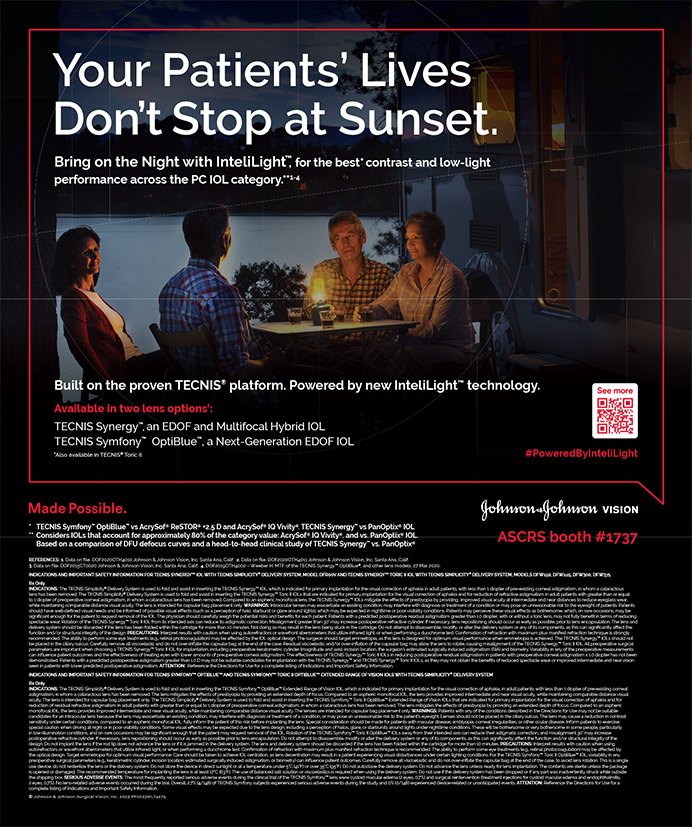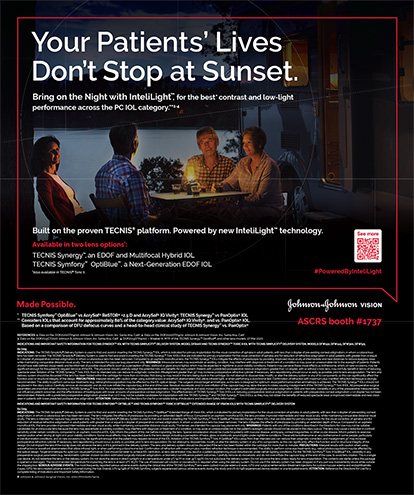The adage jack of all trades, master of none may be applicable to some ophthalmic companies but not to Carl Zeiss Meditec, Inc. (Dublin, CA), according to President and CEO James Taylor. During an interview with Cataract & Refractive Surgery Today, Mr. Taylor explained that it is not Zeiss' goal to grow for the sake of expansion or to attempt the impossible of excelling at the manufacture of every possible piece of equipment. Rather, the company draws on its strengths in order to create useful and valuable solutions for clinicians. "We provide something more than a box or a product," he said. Indeed, Zeiss' continued success seems to be based largely on the company's dedication to playing to its strengths and to taking the long view of the ophthalmic industry.
ADDING VALUE
According to Mr. Taylor, Zeiss concentrates on technologies it can develop and to which it can add value. "[They must] fit with our mission as a technology innovator," he said. During the past 2 years, for example, one of the company's focuses has been on the evolution of the structural-imaging devices that it introduced, specifically the Stratus OCT and the Visante OCT (Figure 1). The role of those technologies has far exceeded the company's original anticipation. "If I told you what our early forecasts were for OCT [optical coherence tomography], it would be embarrassing, because they were far below where we've ended up," Mr. Taylor noted.
The success of OCT derives from Zeiss' work to develop commercially viable devices and a concurrent evolution in the market, Mr. Taylor said. For instance, advances in the vitreoretinal field, including the treatments for age-related macular degeneration, called for a technology that could noninvasively assess ocular anatomy. OCT fit the bill. In addition, Mr. Taylor commented, "As more and more people used the technology, they found out how useful it was not just as a diagnostic tool but also as a patient-education tool."
Understanding the company's emphasis on adding value is what makes Zeiss' decision to bring an excimer laser to a US market already brimming with options comprehensible. The idea was that the MEL 80 (approved myopic treatment range of ≤ 7.00 D sphere, ≤ 3.00 D cylinder, and a maximum manifest refraction spherical equivalent ≤ -7.00 D) would offer advantages over available excimer laser platforms. One of these, Mr. Taylor stated, was more efficient workflow through short ablation times. Additionally, Zeiss continues to develop its Visumax femtosecond laser system. Mr. Taylor explained that the company has moved beyond conceptualization to demonstrating the feasibility of a flapless laser refractive procedure. Now, the company is evaluating how predictable and noninvasive an all-femtosecond operation can be and how the results compare with those of other refractive surgical modalities. "The femtosecond procedure that we have demonstrated involves creating a lenticule and then extracting that tissue," Mr. Taylor said.
Will Zeiss enter the IOL market in the US? According to Mr. Taylor, market research by the company indicates that it would be a welcome player on the scene but that it could not enter the field without bona fide innovations. If the company decides to focus on developing an IOL, Mr. Taylor said, it would be drawing on its recognized strength in the areas of optics and diagnostics. Ultimately, however, such a move will occur only if the company determines that it can deliver an IOL that offers to US surgeons and patients a clear advantage over existing lenses.
THE ROLE OF CONSOLIDATION
A fascinating aspect of the ophthalmic industry, said Mr. Taylor, is that new small companies spring up as fast as the field consolidates. Regarding whether consolidation is good or bad, he stated that it provides the infrastructure and logistics that allow technological evolution to occur. "It is the only way right now to be able to get through the regulatory, distribution, clinical, and interconnectivity investments that are going to be required," he said.
Encouraged to forecast possible consolidation in the IOL market during the next 2 years, Mr. Taylor acknowledged that even today's big players have weaknesses. If another major company sought to enter the field, he said, it would likely attempt to acquire one of the existing share leaders. Because its ophthalmic business is one of Zeiss' top strategic priorities, he thought its acquisition by another company unlikely.
CONCLUSION
Whatever future plans Zeiss may have, its history indicates that it will continue to develop its existing products in accordance with clinicians' and surgeons' needs. That may mean investigating new applications for a product or integrating multiple components into a coordinated portfolio. The introduction of new equipment or products will depend on whether the company can provide something that offers a clear improvement over existing options or that will make physicians more effective in the OR or clinic.
James Taylor may be reached at (925) 557-4662; j.taylor@meditec.zeiss.com.


